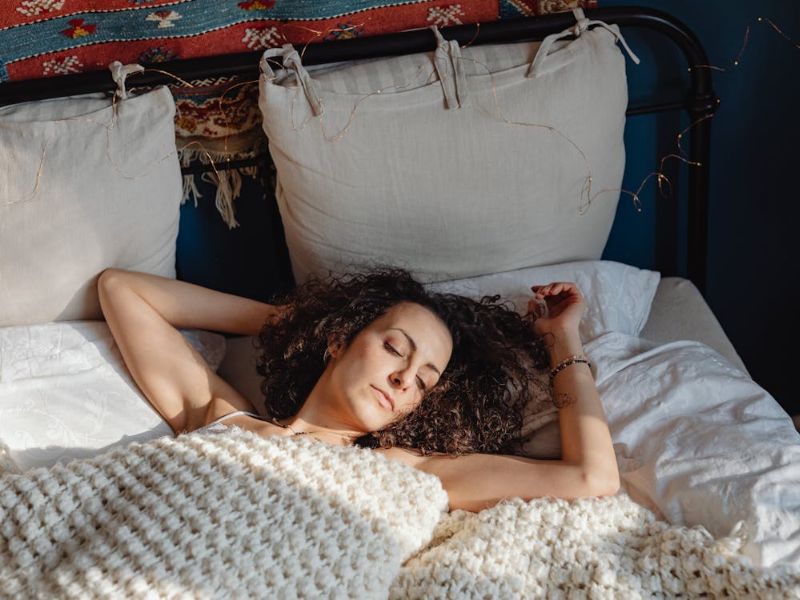The most important thing is to get at least seven hours of sleep each night. However, sleeping incorrectly or on the wrong pillowcase can make you look exhausted.
A few hacks can also help you look your best when you wake up. Medical and beauty experts discuss the “three P’s” – position, pillowcases, and purpose that prevent wrinkles while you sleep.
Your Position Matters. Sleep On Your Back
Michael Jacobs, medical terminology director, said, “It is best to sleep on your back if you wish to reduce wrinkles. The best way to combat those unsightly lines is to sleep on your back.”

Image Credit: Pexels/Kaboompics.com
A sleeping position that stretches and creases your skin can lead to wrinkles over time. Sleeping on one side of your face or your stomach can tuck the skin and cause pressure and shear forces on the skin. Sleeping on your back or using a pillow that relieves pressure on your face may help prevent wrinkles.”
A Silk Pillowcase Can Soothe The Skin
Some experts see the logic behind the claims that using the right pillowcases can improve sleep quality. Jacobs said, “Silk pillowcases are better for your skin.”
Silk is softer than cotton so it won’t tug or pull at the skin during sleep. Silk absorbs less moisture than cotton or microfiber so that it won’t absorb your night cream or hydration overnight. Regardless of the pillowcase you use, wash it regularly to prevent acne.
Your Skin Benefits Greatly From Sleep Alone

Image Credit: Pexels/Miriam Alonso
Prioritizing sleep to undo the damage done during the day is wise. Rubin said, “Most of the environmental damage that happens to the skin is during the daytime hours, with exposure to pollution and oxidizing agents, UV light and other factors, which all contribute, over time, to loss of collagen, fine lines, wrinkles, and dark spots.”
Sleep deprivation affects skin inflammation, aging, and wound healing by triggering stress response hormones. Sleep deprivation contributes to aging of the skin, as well as inflammatory skin conditions like eczema, psoriasis, and dermatitis.